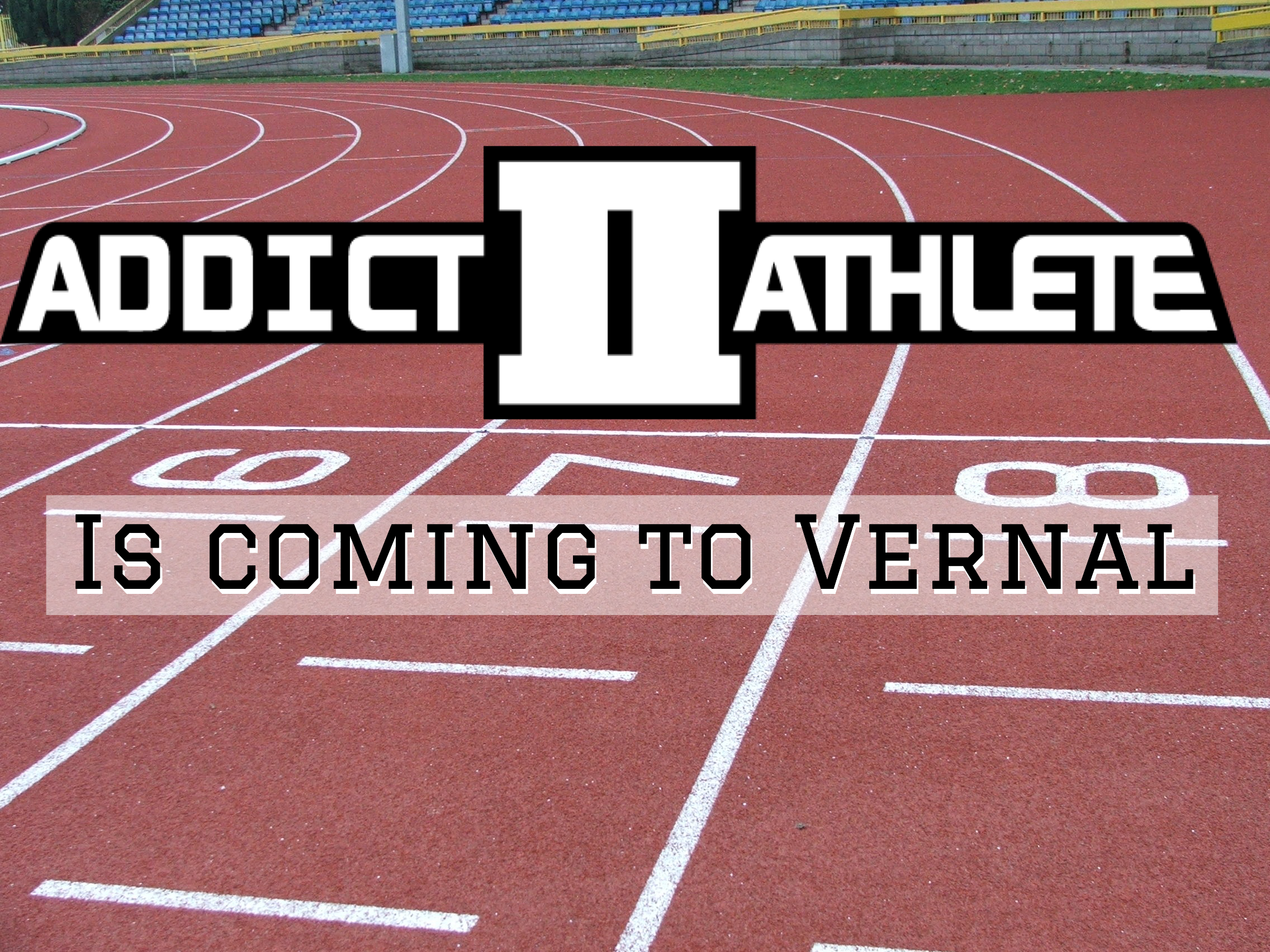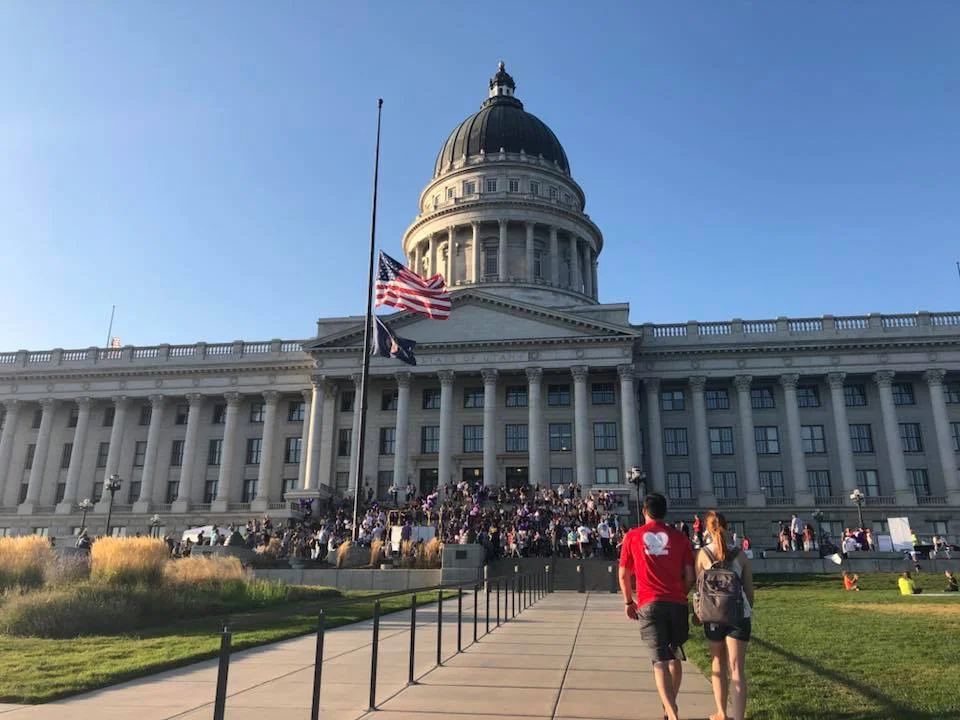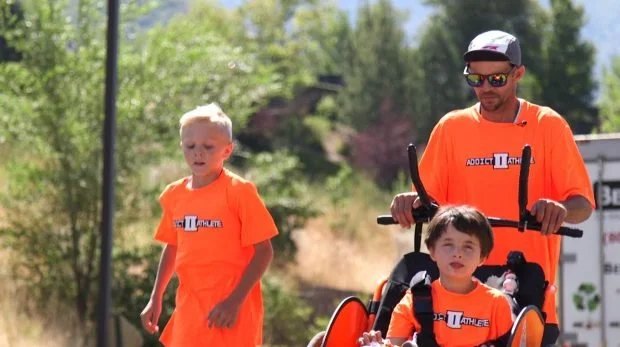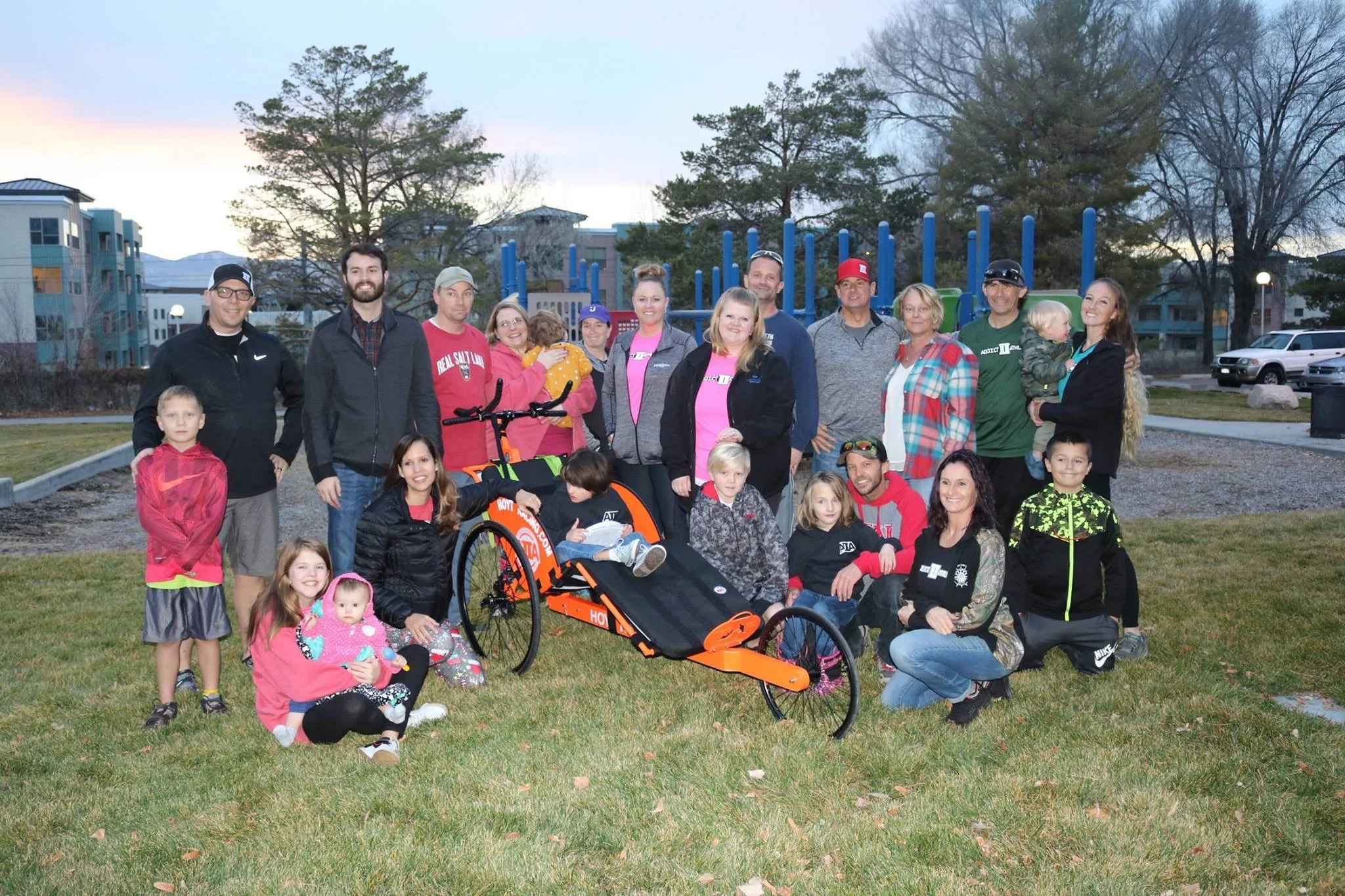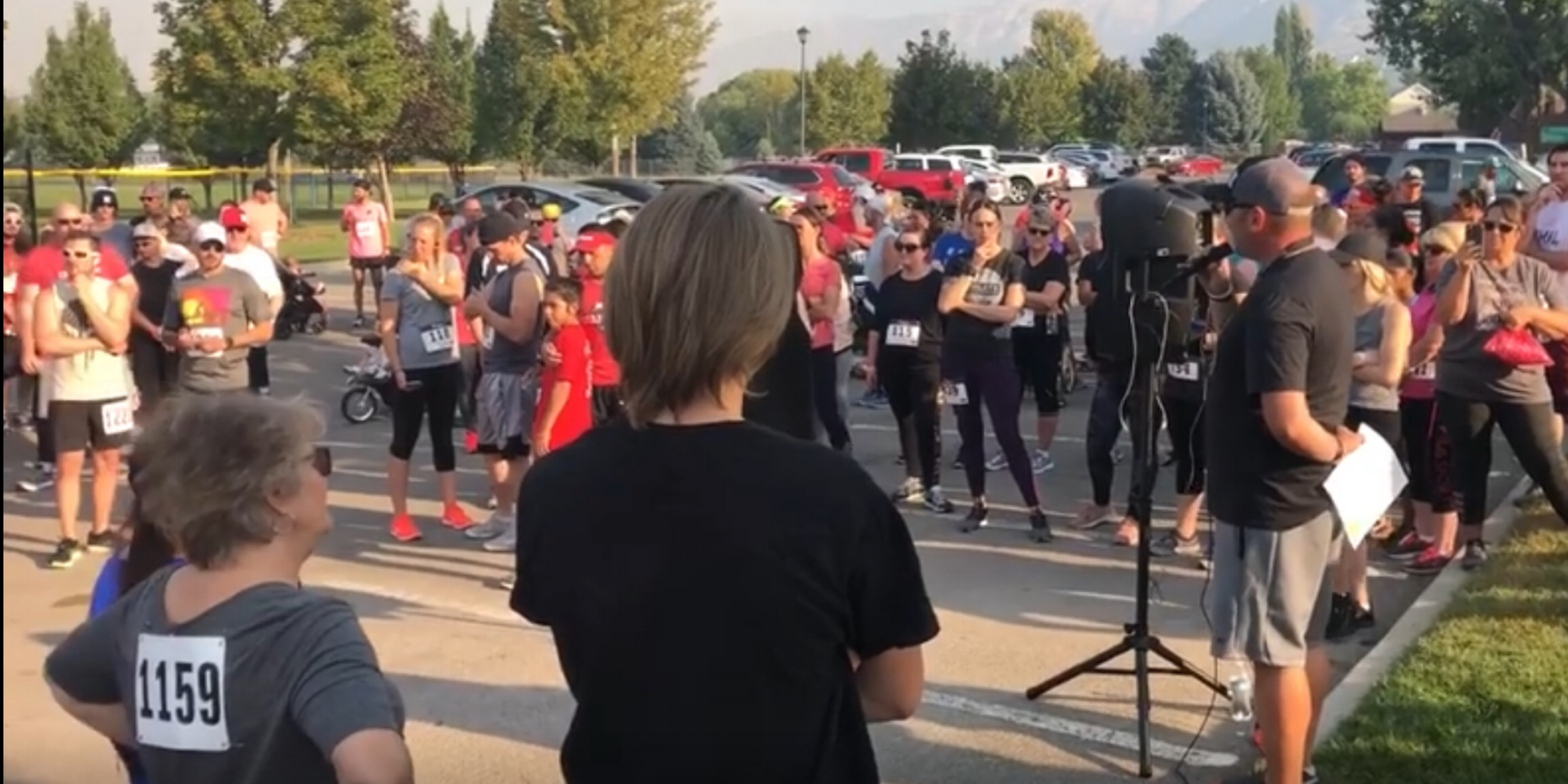
NEWS
RAISING FUNDS TO HELP MORE INDIVIDUALS ERASE ADDICTION THIS GIVINGTUESDAY
UTAH COUNTY, UTAH, UNITED STATES, November 18, 2019 /EINPresswire.com/ -- This GivingTuesday, Addict II Athlete, a Utah-based nonprofit organization that helps individuals erase addiction through health, recreation, service, relationships and team unity, is raising funds to help more individuals & families who are struggling with addiction.
UTAH COUNTY, UTAH, UNITED STATES, November 18, 2019 /EINPresswire.com/ -- This GivingTuesday, Addict II Athlete, a Utah-based nonprofit organization that helps individuals erase addiction through health, recreation, service, relationships and team unity, is raising funds to help more individuals & families who are struggling with addiction.
According to AddictionCenter.com, almost 21 million Americans have at least one addiction, yet only 10% of them receive treatment. By providing addiction recovery services over the last 8 years, Addict II Athlete staff understands that one of the barriers to receiving treatment is the cost. That’s why they are not only raising funds to help more individuals and families in Utah access their life-changing programs but to expand the free content they produce via podcasts and YouTube videos to support the individuals and families who have no-to-little resources to help them overcome addiction. Read more HERE
New program brings community members, recovering addicts together to overcome drug addiction
“It’s the team approach that seems to be working the best. It’s the service, it’s the team unity. It bonds the team together,” Robinson said
James Johnson is very open and honest about his past. He’ll tell you about the day he missed his daughter’s birth because he had been strung out on methamphetamine. He’ll tell you about the night he committed a home invasion to steal drugs and money from drug dealers, which lead to his arrest and ultimately a 7 year prison sentence at the Utah State Penitentiary. He’ll also tell you how his release from prison in January 2019 felt more like a continued sentence than freedom.
“I still felt like I was in prison. I was really struggling, I was alone. I just felt like [home] was a nicer prison,” Johnson said. Committed to leave the drug life behind, Johnson starting running and working out, posting videos on social media to reach out to others because he knew he needed that support too. That’s when Blu Robinson reached out to him. Read entire article
On the Radio
Coach Johnson and Athlete Goddard were live on air yesterday as they were interviewed on channel 104.5 FM on Basin Now Radio in the Community Outreach Programming. They did great sharing about what the program and the team have done for them as well as the growth for the new Uintah Basin Chapter.
Listen HERE
Team AIIA Is Growing
We are excited to announce a new chapter of Addict to Athlete being launched in Vernal, Utah. This will be our first chapter in the Uintah Basin. AIIA will have a kick-off presentation on August 24th, 2019 where we will introduce the community, the judicial and law-enforcement organizations to the team. Soon after this presentation locations for the meeting, times and dates will be scheduled so that anyone who wishes to participate will be able.
Coach Blu said, “It’s always exciting to have another chapter of Addict II Athlete open. It boggles my mind how strong these community resources can become. The team support and team unity becomes like a second family too many people in recovery and to so many others who have a loved one struggling with addiction”.
Everyone is welcome. Whether you are struggling with an addiction, in a therapeutic treatment program or if you are the parent friend or loved one of an individual struggling with addiction of any kind, you are more than welcome to attend our meetings. Find out more about the weekly meetings or by contacting Coach James Johnson 435-724-7733
Overdose Awareness
On August 31st, 2018 Team Addict II Athlete will again participate in the 2019 Overdose Awareness Day. The team will participate in a relay style running event set to the milage that reflects the current overdose rate in the state Utah. “We have developed a new running course and will carry a message to the the state capital that more needs to be done to fight this problem” Coach Jed Jensen explained to the Utah County Chapter of Addict II Athlete.
Anyone wanting to join the AIIA on this run can find the map and relay times to run with the athletes or cheer them during this event. We also welcome you to the state capital where you can be a part of the overdose awareness presentation on Aug. 31st starting at 6pm.
Learn more about Overdose Awareness Utah
Two Families Find Healing From Addiction Through Marathon Racing
Russell Hutchings, Don Hutchings, and Emma Robison
July 27th, 2018 SALT LAKE CITY – 41-year-old Don Hutchings and seven-year-old Emma Robison have one thing in common. They have both overcome a drug addiction, but their journeys could not be more different.
Emma only weighed 2 pounds 2 ounces when she was born. Freyja Robison and her husband adopted Emma at birth.
Her birth mother was addicted to opioids — so addicted that even becoming pregnant couldn’t stop her from using them.
Emma was exposed to the drugs in utero, significantly altering her development.
“She is non-verbal, she is legally deaf, and she is legally blind,” Freyja Robison described. “She loves to play with sensory toys that light up and play music. Music is her language.”
Three weeks after birth, Emma’s system was finally drug free. Around the same time, Hutchings was also reaching his own sobriety.
“I’ve struggled with a lifetime of addiction. It started at age 12 sneaking beers out of my grandparents’ fridges,” Hutchings explained.
After his father went to prison, Hutchings fell into a deep depression and started to self-medicated with methamphetamines.
“If I didn’t have my substance, I laid in bed and shook and slept until I got my phone call,” Hutchings described.
He was pouring $350 into the addiction daily. Sitting in jail time after time finally triggered a change.
One day Hutchings was sitting in jail with a bunch of 18-year-olds comparing charges and he thought, “Is this what my life has come to?”
Hutchings’ and Emma’s lives crossed paths when he volunteered with a group called Addict to Athlete. It’s a program designed to help people battling addiction by training for and racing in marathons.
Hutchings initially went just to meet his probation requirements.
“I went purely out of greed. I wanted to sign off community services hours,” he admitted.
But it didn’t take much to change his heart.
“There was an energy about the team. You could just feel it!” he said.
Hutchings soon fell in love with little Emma. They became racing partners in mainstream marathons. Hutchings pushes Emma in a specially designed racing stroller during each race.
“When Emma sees it she just lights up… and giggles and bounces and squeals. It is the best thing for her!” Freyja Robison said.
The program’s director Coach Blu Robinson said running marathons is a lot like the journey of recovery.
“It sucks, it’s hard, but when you’re done feel good,” he said.
As an addiction counselor, he found running alongside his athletes to be the most effective form of therapy.
He said, “They’d tell me more outside on a training run than they even did in my office.”
Robinson said running offered a new meaning for their lives.
“To allow them to erase the addiction and replace it with things of greater value,” he explained.
Running together has brought healing to two families each suffering from the bonds of addiction.
Hutchings’ wife, Brooke Hutchings, lived through the highs and lows of his addiction and recovery.
“It’s not just the addict that suffers. It’s the family too,” she said. “I never thought we’d make it!”
Brooke Hutchings also volunteers with the team. She said the program has saved their family.
“We have a whole community that surrounds us and we all recover with him together,” she described.
Hutchings said the relationships he has developed on the Addict to Athlete team helped fill a void he experienced while he was addicted.
“It gives me my connection with people who are like minded. People who are on the same journey,” he said.
Hutchings’ 11-year-old son, Russell Hutchings, cherishes the time he is able to spend with his dad today.
“Why I run is now I can spend time with him because back then I couldn’t,” he explained.
Freyja Robison said becoming friends with Hutchings and his family has helped understand how hard it was for Emma’s birth mother to quit. Freyja Robison said she forgives her.
“I didn’t understand that until I got to know people who have really been through the battle and come out the other side,” she described.
Hutchings’ service enables Emma to move in ways she otherwise could not.
“Racing gives her the ability to be free!” she said.
The bond Emma and Hutchings share is extremely special and unique.
“Even though she has trouble seeing and hearing, she knows when I’m there. She can feel me,” Hutchings said.
Frejya Robison believes Hutchings presence comes from a higher power—“an angel in human form!” she said.
In October, the Addict to Athlete team is flying to Washington D.C. to support Hutchings and Emma who are running in the Marine Corps Marathon.
The organization has more than 2,000 athletes in Utah and welcomes anyone touched by addiction.
Watch Story HERE
Addicts turned athletes rally to help drug-addicted girl
“A few years ago, a friend whose son was wheelchair-bound told her about a group of runners who made it possible for special-needs children to participate in races by pushing them in strollers or wheelchairs. That group was Addict II Athlete, and it turned out to be just the kind of extended family the Robisons needed.”
July 15, 2017 By Amy Donaldson
SALT LAKE CITY — Emma Robison’s story illustrates just how unfair life can be.
But thanks to the generosity of others, hers is also the story of how simple acts of kindness can transform even the most dire situations.
The petite 6-year-old was born addicted to drugs she never had a choice in taking. The methamphetamines robbed her of physical, mental and emotional abilities that most of us take for granted.
“When we first saw the girls, they were 3 months old, and Leah weighed eight pounds,” said their mother, Freyja Robison. “Emma weighed four pounds eight ounces.”
Freyja and her husband, Shad, got a phone call about the twins when their oldest daughter, Elizabeth, was 2½. All three girls had the same biological mother, and despite the significant challenges that awaited them, the Robisons fell madly in love with those tiny twins.
“Leah is very mobile,” Freyja said. “She has about 80 percent of normal function.”
Emma wasn’t as lucky.
“Emma has struggled with feeding and all kinds of sensory issues her whole life,” Freyja said. “She hated to be touched.”
She hated being touched, hugged and kissed.
“But she loved being swaddled,” Freyja said. “She loved deep sensory. That’s how we survived. We could swaddle her, and there was so much touch everywhere, she would eat.”
A few years ago, a friend whose son was wheelchair-bound told her about a group of runners who made it possible for special-needs children to participate in races by pushing them in strollers or wheelchairs. That group was Addict II Athlete, and it turned out to be just the kind of extended family the Robisons needed.
“They love our kids,” she said. “They love everything about our kids. We use them as our legs and our bodies and our hearts and souls to push our kids through races.”
While Freyja and Shad recently ran their first half marathon, she claims she’s not a runner. She does a few 5Ks with Emma, but she leaves the lengthy mileage to the runners who found their own support and salvation through a group that uses exercise as a tool to battle addiction.
It isn’t just that the AIIA athletes are willing to push Emma, just as they pushed her older sister, Elizabeth, until she passed away 18 months ago. It’s that they understand the challenges her children face in ways that most people cannot.
“As horrible as it sounds, our kids are addicts,” Freyja said. “I don’t understand everything they go through, but when they do and when they see our kids, they high-five them, they love them.”
She is also looking to the group to help her explain to Leah just how precarious sobriety can be. Freyja knows that as Leah gets older, she’ll be exposed to addictive substances.
“If she ever gets introduced to anything addictive, she’ll be hooked in a heartbeat,” she said. “We want her to have that support, and I know this group will be there for her.” The runners in the group understand what it’s like to live with addiction. They know what can be lost in the struggle, and just how dark certain situations can seem.
But they also know what it’s like to triumph over addiction. In fact, the beauty of AIIA is that it allows members to take responsibility for their recoveries, including the decisions that led to their addiction, while also allowing them to break free from the stigma.
Addiction doesn’t define them, and with the help of the group, it also doesn’t limit them. They become, through their accomplishments as individuals and as a group, so much more than "addicts."
“We can do hard things, and we’ve been through a lot,” said Lisa Hancock, the Salt Lake team captain for Addict II Athlete, which meets every Tuesday at 7 p.m. at Salt Lake Community College’s Lifetime Fitness Center. “It makes us stronger to go through what we have and come out on the other side.”
She said they speak openly about addiction because they want those still struggling to know there is always hope.
“People think something like meth is too hard to get off,” she said. “They think it isn’t possible. How can they know it’s possible if they don’t see it?” Hancock will celebrate six years of sobriety from meth and alcohol in September, and she said sharing not only reduces stigma, it also reveals how different, successful and productive people can be if they deal with their addictions.
“I’m not going to be silent,” she said. “People need to know there is hope.”
Which is the 102-mile Break the Cycle relay Hancock organized this weekend, which serves multiple purposes. Yes, they hope to raise the $3,800 they need to buy Emma a new racing wheelchair. (Donations are still being accepted at addicttoathlete.org/donate)
But they also hope to let those struggling, and their families, know that the chains of addiction can always be broken. And that feat is easier to accomplish with help.
The Robisons have been the beneficiaries of that help, especially Elizabeth and Emma.
“We call them our loaned legs,” Freyja said. “But really, they’re a loaned heart, soul, body. They donate and leave so much on the trail with our kids. It’s hard to put into words what they do for our kids.”
That’s because so much of what her family receives from their AIIA friends is more easily felt than described.
“The light that is in their eyes when they’re racing,” Freyja said. “The light that’s in their eyes when they just see these people.” They each need and receive something unique from their friendship with Addict II Athlete’s members, whether they run, volunteer or cheer. But it is especially critical for little Emma.
“Leah will go and run and ride her bike,” Freyja said. “Emma is kind of trapped. When she gets in the racing chair, she’s totally free. She laughs and giggles and has the most amazing time when she’s racing. I see her smile more in a racing chair than any other time in her life. … This group loves her for who she is. They don’t require anything of her whatsoever. They just love to run with her.”
Hancock chokes back emotion as she talks about how she pushed Emma’s older sister Elizabeth in one of her first races after joining Addict II Athlete two years ago. Pushing a racing chair is physically challenging but emotionally rewarding.
“It’s very emotional,” she said. “Knowing the emotion the child is going through while you’re pushing, it’s just an amazing feeling. It gives you the adrenaline to continue.”
And that’s really what this weekend was about.
Too many people understand how cruel and unfair life can be. And what this group of addicts turned athletes showed us this weekend is that it isn’t hard to make sure they also know how a little love, friendship and support can transform tragedy into triumph.
Article HERE
High On Exercise: "Addict To Athlete" Organization Inspires Purpose, Healing for People in Recovery
There are no war stories about hitting rock bottom at this Utah fellowship for people in recovery. Group members lean on each other, united by their desire to heal from drug and alcohol addiction. But they don’t fit a 12-step mold.
When they talk stigma, it’s about changing public attitudes. When they mention surrender, it’s often about wanting to give up in the final stretch of a grueling marathon – then finding the will to finish. They cheer each other’s fitness milestones. They recite a “Champion’s Creed” and help the newbies go from the couch to their first 5k.
“Addict II Athlete,” as the group is known, advances sobriety through physical fitness. The non-profit organization has about 800 members throughout Utah who bring awareness to the recovery movement and raise money for local charities with races and other events. The Utah State Prison has also adopted Addict II Athlete, incorporating the platform into its Con-Quest substance abuse treatment program for inmates.
“All I knew in my heart is that I needed change and that getting into shape seemed to be a great place to start,” says Tim Sedgley of Springville, Utah, who joined Addict II Athlete about a year after his release from prison.
Battling drug addiction and depression, Sedgley figured his sedentary lifestyle wasn’t helping.
“I remember thinking, ‘I just want to be able to run a mile without stopping’” he recalls.
Sedgley met that goal, then kept going. “I have completed two 50-mile ultra-marathons, a trail marathon, and many 5k, 10ks, and half marathons,” says Sedgley, a former high school dropout who earned his GED in recovery and is now working toward a bachelor’s degree in psychology. He has remained sober since joining Addict II Athlete in 2012.
Most men and women don’t consider themselves to be athletic when they join the group, says Blu Robinson, a Utah County mental health and substance abuse counselor who founded Addict II Athlete with his wife Marissa in 2011.
“There are no expectations that you have to be bigger, better, faster or stronger,” Robinson says. “I have seen faster athletes sacrifice their own race to walk alongside a newcomer. It’s what unifies and strengthens the team. It’s a metaphor to recovery, as no one ever finishes alone.”
Moving Past the Pain of Addiction
Each week, members of Addict II Athlete attend free support group meetings, followed by about 30 minutes of team recreation such as running, CrossFit, yoga or walking.
Volunteer coaches remind participants that the trials of running a half marathon are nothing compared to the agony of detox, prison life, or having their children taken away because of the addiction.
“No pain while working out will ever compare to that,” Robinson says. “So really, they are the experts of overcoming adversity. We talk about their life having the ability to inspire others –
to persevere and gain understanding that we have and can do hard things in life . . . and slowly, we move them from addict to athlete.”
Transformation occurs alongside family members and loved ones, who are welcomed into the fellowship – where they are known as “Muggles.” Children of parents in recovery join the “Minor League” program. “We assist them in sporting events, swimming lessons, service-oriented activities, and even sponsoring them in their own pursuits,” Robinson says, adding that donations cover athletic shoes and race entry fees for participating youth.
Service to the community is an integral part of Addict II Athlete. The team registers for one non-profit race each month, and raises funds for items such as adaptive wheelchairs to help disabled children cross the finish line, too.
Giving back is especially poignant when the cause relates to addiction-sensitive issues such as drunk driving or adoption. “When our team participates in these kind of activities, we always call ahead to ensure that the organizer knows who we are and why we want to participate,” Robinson notes. “It’s quite emotional to say the least.”
Finding Purpose in Prison
Nearly 90 percent of inmates in the Utah prison system have a substance use disorder or history of drug and alcohol problems, says Deputy Warden Greg Hendrix. He estimates that up to 300 offenders, male and female, have participated in Addict II Athlete.
“Every spring, we have a tradition of running a 5k. This has been an exciting part of Addict II Athlete in the prison setting,” Hendrix says. Inmates with running experience mentor the less experienced athletes, helping them rally toward a goal.
“Many of the runners that finish first will keep running to support those that are much slower,” he says. “(They) will return to the track on the final lap to help bring in the last runners. It has been great to see that kind of support.”
What endures from the Addict II Athlete experience, Hendrix says, is the team mantra that inmates embrace: “Erase and Replace.”
“This means they are erasing substance-using behaviors with new coping skills or rediscovering coping they used in the past,” he says. “They are finding that passion that kept them healthy before – or they are discovering, for the first time, a different passion.”
As they transition to life outside prison, inmates can use Facebook to find the nearest Addict II Athlete chapter. Sharing the joys of exercise with a sober support group “will increase their likelihood of staying sober and finding a lifestyle they want to live,” Hendrix notes.
Champions of Sobriety
Robinson knows firsthand how fitness can build connections and renew a broken spirit. Growing up, he endured physical abuse by multiple stepfathers, and lived with poverty and instability – moving 23 times in his youth. To escape his toxic childhood, Robinson began using drugs at 15 – following a path to addiction that was also taken by several of his siblings.
He committed to recovery in his 20s, and met his wife Marissa, a therapeutic recreation specialist, when both were working at a center for troubled youth.
“In my own life, my own sobriety, I knew that one major outlet I used was recreation –
mountain biking and specifically running,” Robinson says. “I knew that exercise increased self-esteem and decreased depression.”
So Robinson had the idea to create a pilot project, training some of his therapy clients to run their first 5k. As they gathered for warm-up stretches, the five volunteers were often anxious about their days ahead: meetings with judges and probation officers, temptations to use drugs.
“We’d begin processing these stressors before we would run, and on our return I would always ask how they felt,” Robinson says. “And every time, they experienced and expressed feeling better.”
One team member gave the inaugural group a shirt that read ‘Addict II Athlete’ – shedding the anonymity of their disease. “These individuals put their shirts on and ran their hearts out,” Robinson recalls. “Each one of them finished, each had family members who cheered for them, and couldn’t believe what they were doing.”
Today, Addict II Athlete has chapters in six Utah counties (two are pending) and Robinson hopes to expand to more states in the future. He sees Addict II Athlete as a meaningful complement to other recovery strategies and support, such as 12-step programs.
“We counsel our athletes to participate in the 12-step programs to gain a better understanding of the spiritual component of sobriety,” he says. “They use the team for support and recreation, and then do their own work with therapists and treatment programs to have a triad of sobriety and recovery.”
When they are feeling vulnerable, members of Addict II Athlete can invoke the Champion’s Creed. “Any one of our athletes will yell, ‘Athlete who am I?’ and the team in unison will respond ‘I am a champion!’” Robinson says. “It’s erasing their thoughts of being lowlifes, being addicts, being bad parents, bad spouses or bad children and showing them who they truly are: extremely powerful people with the ability and stamina to knock out the addiction. They are in fact champions of sobriety.”
Sedgley, who joined Addict II Athlete after prison and became an ultra-marathoner, says the experience goes beyond physical fitness.
“The real changes started when I found others accepting me onto the team,” Sedgley recalls. “They asked me how I was doing. I was invited on runs with the team, and also asked to help with service projects.”
“This team has given me confidence in myself, trust in others, and has helped me put my life into perspective,” Sedgley adds. “When I look back on my journey, I see that the game changing play was when I joined the team.”
Marissa and Blu Robinson, co-founders of “Addict II Athlete.” The non-profit helps people in recovery replace harmful habits with running and other forms of exercise.


